Screen Tests: Experimental shorts by Ann Arbor filmmakers

Like all great things, the Ann Arbor Film Festival rose from humble beginnings.
Founded in 1963 by filmmaker and connoisseur George Manupelli, the festival quickly earned an international reputation as a premier venue for independent and experimental cinema. The Michigan Theater has provided the AAFF with a luxurious home since 1980, but the original home base was the University of Michigan’s Architecture Auditorium (now known as Askwith), and the vibes back then were decidedly scruffier.
Local film historian, projectionist, and author Frank Uhle remembers it well.
“In the early days of the Film Festival, audiences were very interactive,” he explained. “There was always a smell of stale beer, cigarettes, and pot smoke in the air. Inevitably some of the films were boring, or pretentious, or deliberately provocative, and people would yell their opinions at the screen or whistle and make noise.
“Sometimes another person would defend the movie and an argument would ensue. Always, a beer bottle would get tipped over in the dark and roll noisily down the sloped floor while everyone snickered.”
That’s the kind of anarchic spirit Uhle will be conjuring on Friday, December 1 at 7 pm when he hosts “Experimental Shorts by Ann Arbor Filmmakers From the 1960s-80s,” a free screening of vintage celluloid at Askwith Auditorium in Lorch Hall. (It's part of U-M's semester-long "Arts and Resistance" series.)
No, he’s not going to let you smoke in there, but he’ll be showing early homegrown AAFF favorites in the same venue they first flickered in back when the counterculture was the culture and the art was the point.
Uhle went to his first AAFF in 1978 and has been involved in local film culture ever since. His recent book, Cinema Ann Arbor, covers the 100-year history of A2’s campus cinema societies and the filmmakers they inspired and nurtured.
Students first officially organized film clubs in 1932 to screen non-mainstream fare, local interest grew along with the AAFF and the university began its film program in 1968. By the 1970s, there were multiple, competing student film societies outdoing each other with screenings of foreign rarities, forgotten Hollywood masterpieces, and uncompromising experiments. It was inevitable that a devoted scene of filmmakers would bloom in such soil, and it’s these artists that Uhle celebrates, a few of whom he’ll have on hand for a Q and A session after the screening.
The films share a loose, improvisational approach but cover a wide range of styles. Handmade animation, abstract imagery, punk lampoonery, cinema verite slices-of-life, introspective moodiness, anti-war agitprop, plus vintage promos and ephemera from film society screenings of the day. Some haven’t been seen for decades, enjoying only a handful of local screenings after production before languishing in various states of storage.
“I got them from a bunch of different sources,” said Uhle. “Mostly from filmmakers, but some of them were literally found in the attic of the Michigan Theater. A lot of the projectionists from U of M would also moonlight at the Michigan, and at a certain point people were stashing these prints up in the attic.”
Others came from faculty members who had purchased and preserved some of the better films that former students had made.
“I’ve had some strokes of good fortune. Alan Young from the film program has this wonderful office that’s like an archive of old equipment," Uhle said. "I noticed up on a shelf there were a few reels of 16mm film. They were student projects that they saved. Some of these films, my god, they were just amazing-looking films.”
Here are a few highlights:
Claudfest: Singer-songwriter Claudia Schmidt celebrates 50 years of performing
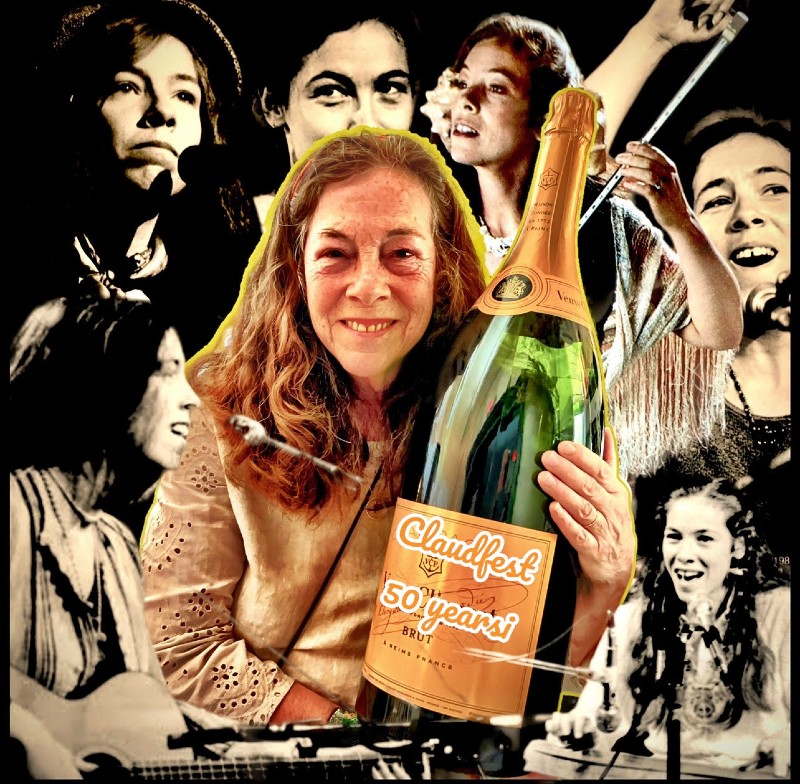
“Golden anniversary” sounds tacky and “semicentennial” reads incomplete, so what does a musician call her slow-rolling, year-long celebration of 50 years on stage?
For Claudia Schmidt, you just go ahead and portmanteau it—hence Claudfest, and let the bells ring.
Schmidt’s career as a singer-songwriter spans time as well as genre, and she’ll perform selections from her accumulated repertoire on Saturday, October 7, at The Ark when she appears with Rachel Davis.
While she remained active through the COVID-19 shutdowns with a regular series of YouTube concerts, the stage is where Schmidt’s art truly breathes, her rapport with the audience an essential element. Her long-awaited return to A2 brings Claudfest to a city that bore witness to various stages of her musical evolution.
A native of New Baltimore, Michigan, Schmidt pulled the modern equivalent of running away with the circus as soon as she was able, joining a theater group after high school and traveling with them for a year. Another round of seasons given to the University of Michigan didn’t work out, so she relocated to Chicago, where an already vibrant folk music scene welcomed her and inspired a career that led to dozens of records and countless miles.
Ann Arbor would have been a regular stop for anyone playing the Midwestern folk circuit of the 1970s, and Schmidt had no shortage of gigs at the venue she’ll visit this weekend. “I’ve played at all of The Arks,” she said. “I played at the original one on Hill Street, then when it moved to South Main. I’ve followed them all around.”
Friday Five: A look at The UP, forgotten contemporaries of The Stooges and MC5

Friday Five highlights music by Washtenaw County-associated artists and labels.
This week, we have a special edition focusing on The UP.
*****
As Ann Arbor creeps towards its bicentennial in 2024, residents can be proud of a history rich in accomplishment, with achievements in medicine, politics, and sports that mark this city as a force for progress in human endeavor.
But who cares?
For millions of music fans around the globe, the only reason to discuss A2 is its role as an incubator for two bands whose uncompromising sounds proved an important step in the evolution of punk rock and heavy metal. The MC5 and The Stooges spent formative years here in the late 1960s, experimenting with volume and energy in our basements, living rooms, and public parks while perfecting distinct approaches to raw, aggressive rock 'n' roll.
September 23 is the 54th anniversary of the University of Michigan Union Ballroom gig that got both bands signed to a major label, and it's a cultural moment worth celebrating.
Elektra representative Danny Fields was in town to evaluate the MC5's viability, but after watching this show, he saw the future and offered both The Stooges and the MC5 record contracts the next morning.
The third act on that bill, The UP, did not get a big break that night—or any night, since no record label ever signed the band. But the Ann Arbor group's dedication to revolutionary rock 'n’ roll was just as savage as that of its peers.
Sock It to Me: Bob Seger’s eight most crucial forgotten songs
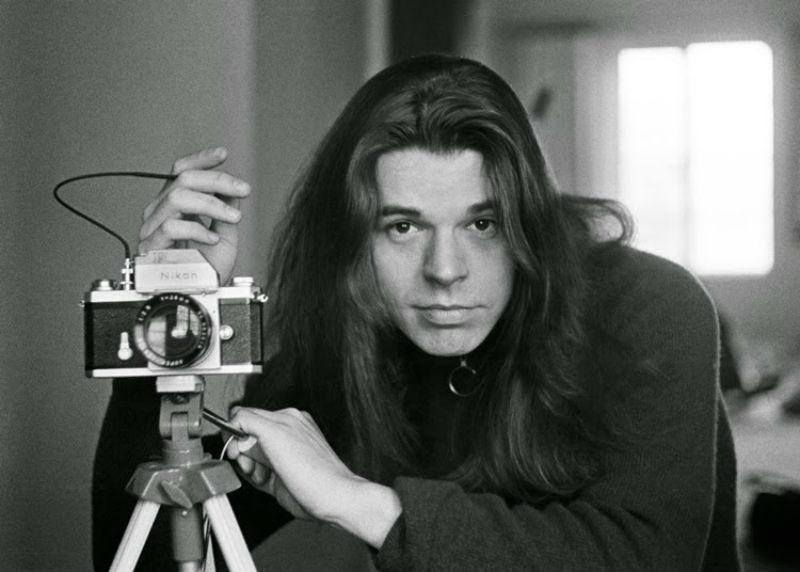
This story was originally published June 6, 2019, just before Bob Seger brought his farewell tour to Michigan. We're rerunning it because another Seger-related event is happening on June 26, 2022 from 3 pm to 4:30 pm at the Ann Arbor District Library's downtown location:
"Turn the Page: The Bob Seger Story with Edward Sarkis Balian"
Dr. Edward Sarkis Balian grew up in Detroit and was in a local band at the same time that Bob Seger was breaking into the music business during the tumultuous 1960s. Dr. Balian’s association has continued with Mr. Seger, as they have both shared the same entertainment attorney for over 40 years. In this interactive presentation, Dr. Balian answers questions in-depth, discusses video highlights of Seger's career, and shares many facets of Seger's personal and professional life.
Misfortune & No Wealth: Soul band The 24-Carat Black was discovered in Ann Arbor and recorded its 1973 underground classic in Ypsi
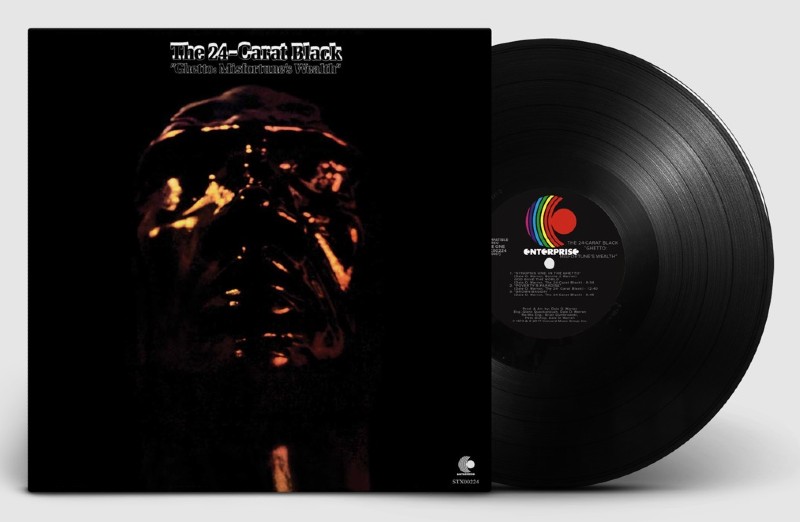
The long-running 33 1/3 book series devotes each volume to the study of one classic album’s creation, impact and essence, and recent entry number 152 concerns an album made in Ypsilanti nearly 50 years ago. Author Zach Schonfeld relates the messy tale of quixotic ambition that birthed an album unknown but not unheard, commercially unsuccessful but the backbone of big hits for other artists: The 24-Carat Black's Ghetto: Misfortune’s Wealth.
Released by Stax Records in 1973, the album was the brainchild of Detroit native Dale Warren, a classically trained violinist who began his career arranging songs for Motown before migrating south to the funkier climes of Memphis. Employed by Stax, Warren’s talent for conducting helped build the lush, string-cushioned vibes of Isaac Hayes’ most iconic works along with other classic records of the R&B/soul label’s late era.
Warren composed his own ambitious set of socially conscious songs with the aim of producing a concept album about inner-city poverty, so he scouted for talent. At a University of Michigan frat party he discovered a nine-piece band of high school kids from Ohio with chops beyond their years. The band was re-christened The 24-Carat Black, an album deal was secured from Stax, and they headed for the legendary Morgan Sound studio in Ypsilanti to make a record.
Iggy Pop released the pandemic-themed song "Dirty Little Virus" (for better or worse)

Iggy Pop doesn’t have anything to prove.
If he didn’t actually invent punk rock in 1969 with the Stooges, he served as its preening avatar and encouraged countless teenage maniacs to take to the stage, ability be damned. He gave the world “Lust For Life,” “I Got A Right” and “No Fun,” mutilated himself publicly for the elucidation of the audience, and introduced peanut butter as a stage prop.
The strength of Iggy’s work over the first decade of his career cannot be overstated—it’s some of the most vital, intense, and alive music ever recorded by humans. If only for the masterpiece that is Funhouse, Iggy Pop has served humanity well and his current comfortable retirement in Florida is richly deserved.
So when Iggy Pop decides to release a new song on his Bandcamp page, who are we to question its worth?
Encore, Encore: Inside the Legendary Liberty Street Record Store's Relocation to Kerrytown
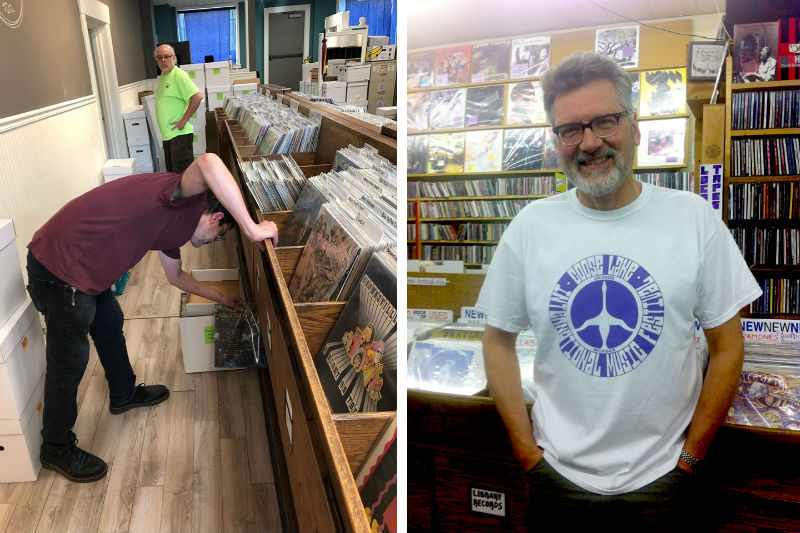
It’s most inconsiderate of me, barging into Encore Records' new Kerrytown location mid-afternoon on moving day. Staff members labor over empty wooden racks, loading in and alphabetizing the thousands of vinyl LPs trucked over from their former Liberty Street store. A few have been at it since early morning, but all of them have been working overtime for weeks to make this move happen, and co-owner Jim Dwyer takes a break from the action to stand among file boxes and a pile of computer equipment and entertain my questions.
“There’s still a lot to do here, too,” he says. “We’re just unpacking records today, but we don’t have any CD shelves set and I’ve got to put my office together so I can do this month’s sales tax report that’s due in a week. It’s been weird, running a business that’s moving. It’s really like having two or three jobs.”
While proprietors have come and gone, the building at 417 East Liberty has housed a record store continuously for over 50 years. Dwyer and co-owner Bill McClelland are only the latest in a long line of music enthusiasts to keep the vinyl fires burning in that spot. As it turns out, they are also the last. The building’s ownership passed on to new landlords last year, and their vagueness about an upcoming lease renewal convinced the Encore partners that it was time to move, and quick.
Human Skull's instantly appealing jangle-punk doesn't "Take a Lifetime" to enjoy

Six songs strong and 12 inches wide, Human Skull's vinyl debut, Take a Lifetime, is a brief but engaging record that documents the latest developments from an Ann Arbor punk rock band that, as its website suggests, is “probably less punk than you think.” Indeed, their velocity and ferocity get applied to songs with genuine Midwestern hearts beating beneath the leathers, expressing yearning rather than rage and avoiding easy classification.
For two albums -- a self-titled, digital-only debut and the cassette release The Penny and the Ball -- Human Skull has honed a unique style rather than wandering, and Take a Lifetime distills that sound into its most potent, clear-eyed state. Melodies are challenged in interesting ways, each traditional choice countered with a harsh chord or sudden, whiplashing tempo change. At times Human Skull’s riffs can recall early REM if they weren’t bashed out at rollercoaster speed with the band in lockstep around every tight corner.
Guitarist/vocalist Joel Parkkila goes easy on the fuzztone, relying on cleaner textures except when making a point, and his solos are devoid of tired guitar heroics, fitting tastefully into the song rather than wailing above it. Rhythm section Stefan Krstovic on drums and Brent Barrington on bass don’t back him up as much as race him to the finish, and with Parkkila’s plaintive yowl as punctuation, it’s bracing and real.
We emailed with Human Skull about the production of Take a Lifetime, which you can here below.
Starring Ron Asheton: A rundown of The Stooges' ax maniac acting in horror films
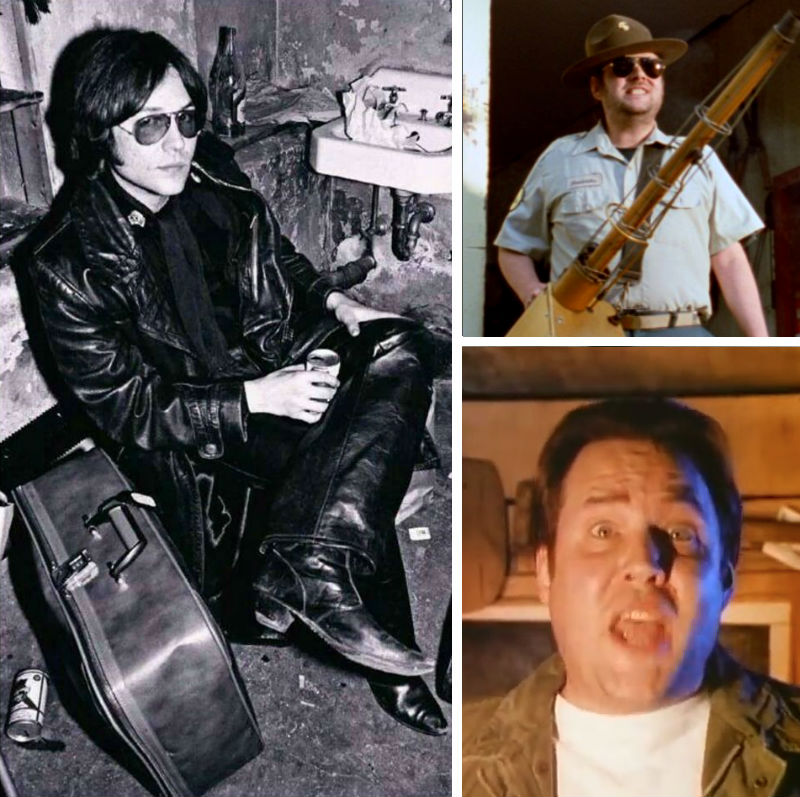
July 17 is Ron Asheton’s birthday. He died in 2009 at the age of 60, but not before he and the band he helped make famous had one last run when The Stooges reformed in 2003.
The Stooges arose from the rich musical compost of the Ann Arbor/Ypsilanti area in the late 1960s and while the classic original lineup (Asheton on guitar, his brother Scott Asheton on drums, Dave Alexander on bass and Iggy Pop as frontman) only lasted a few glorious, intense years, the racket they made proved durable. They were a quartet of teenage cavemen with four chords between them, amps set for aggression, gnawing at the deepest atavistic urges of the human animal. Like all geniuses, they were unappreciated in their day but went on to inspire generations of future primitives around the globe and made punk rock inevitable.
After the Stooges, Ron Asheton enjoyed a long music career with bands such as Destroy All Monsters, New Race, and Dark Carnival. He passed away from a heart attack shortly after a high-profile Stooges reunion. The man’s legacy in the annals of rock history is secure, legitimized by no less an “authority” as the Rock & Roll Hall of Fame, but that isn’t the reason we’re here.
What is discussed less about Asheton is his acting career, which found him playing both major and minor roles in five low-budget, locally sourced horror films shot in Michigan between 1988 and 1995. From all reports a genuine fan of the genre, Asheton holds his own in these cheap, gory, and frankly ridiculous films, sometimes emerging as the most believable actor on the screen (the competition is hardly stiff). He’s unrecognizable as a former rock guitar mangler, opting instead for a somewhat schlubby onscreen persona, sometimes as comic relief or second banana to a more traditional lead.
So in honor of Asheton’s birthday, let’s review his filmography:
Swords & Strats: Fuzz Fest's annual celebration of lowdown rock 'n' roll returns to The Blind Pig

After six years of glorious noise, one wouldn’t be wrong to think of Fuzz Fest as an Ann Arbor institution -- if using that word for a celebration of Michigan’s loudest and weirdest metal/punk/psychedelic artists didn’t seem so incongruous.
Once again invading the Blind Pig with a sea of denim and leather, Fuzz Fest 6 serves as an important convention for those with calloused eardrums and dilated pupils -- or anyone who seeks out the musically extreme.
The lineup is 33 bands strong, spans a number of genres and represents more decibels than most responsible adults can consume over the course of three days, but here are a few highlights based solely on this reporter’s particularly coarse tastes.


































